If you’re thinking of welcoming a Jack Russell Terrier into your home, the below has all the information you need to understand and get a good feel for this breed. Please remember not all dog breeds suit all homes, and you should read the below profile of a Jack Russell Terrier very carefully to see if you’re sure you can welcome a Jack Russell into your home.
Or, perhaps you’re here to just learn about the dog breed and not interested in offering a home to one just yet. The below will also give you a good insight into the breed.
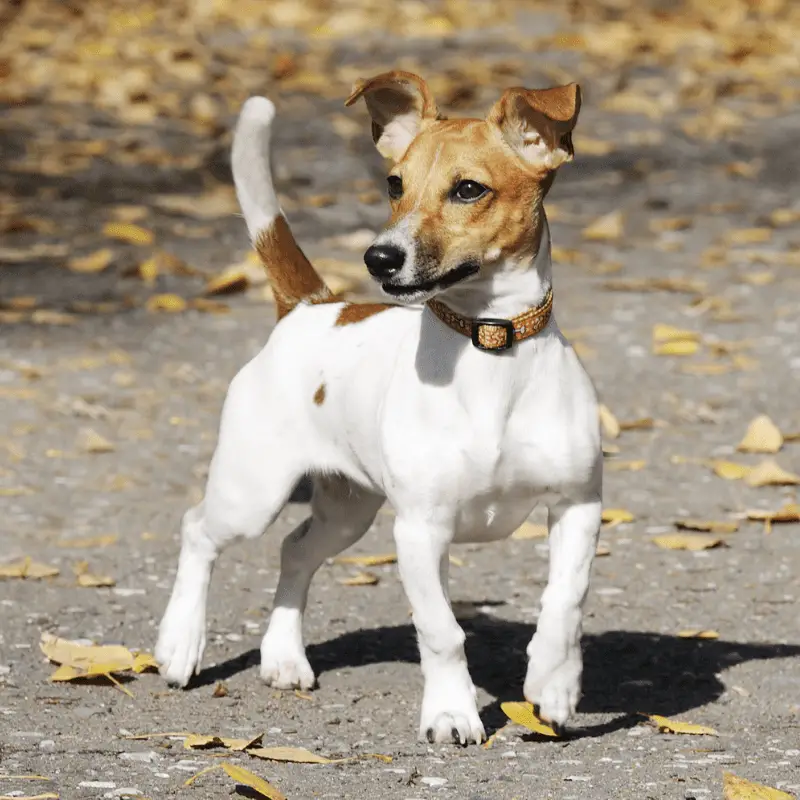
The Jack Russell Terrier’s common nicknames are JRT and Jack. This breed of dog originates from England over 220 years ago. A Jack Russell Terrier is of a small-medium size dog breed. Jack Russell Terriers have a happy go lucky outlook, and they love to be with their owners as much as possible. A Jack Russell Terrier lives to impress its owner but at the same time be independent and courageous. The Jack Russell Terrier breed was bred for mainly fox hunting back in the 1900s. We owe our thanks to that an English gentleman called Reverend John Russell. Reverend John Russell perfected this breed; they supported the hunters during a hunt and supported the hunter’s hounds. They would run the foxes out from their dens for the hounds to chase, or they would shake them at the neck to immobilise them, ready for the hunter or hounds to collect. Reverend John Russell was very proud of his Jack Russells, and he was proud to say that his Jack Russell Terriers never drew any blood from an animal.
| Common Jack Russell Terriers nicknames: | Jack Russell JRT Jack |
|---|
Now you have a little bit of a background into the Jack Russell Terrier, let’s delve into each section in more detail to give an even better understanding.
Characteristics and Personality
The Jack Russell Terrier is bursting with charisma so that there is never a dull moment. Their energy levels can be somewhat high, which drives their personality to the next level. A Jack Russell Terrier thrives on human companions, making them highly affectionate, loving and loyal. A Jack Russell will undoubtedly follow you from room to room. They like to keep a close eye on their companion, and they do this with joy and devotion. A Jack Russell will always greet you at the front door with pure excitement to see his companion back and safe. A Jack Russell can be somewhat cheeky to encourage its owner for some playtime. They never lose their personalities when they grow old. An elderly Jack Russell Terrier will always, if possible, continue to walk around after you, following you with love and devotion. If capable, an elderly Jack Russell will still greet you at the door with excitement every time you return home.
Temperament
Bold, Fearless, Friendly, Confident, Energetic, Lively, Alert, Keen, Athletic, Vocal.
Playfulness
Jack Russells are bursting with energy, making them playful little souls, and they love to run and mess around to burn off their energy. A Jack Russell Terrier could go on forever playing if they could. A Jack Russell gets so much joy out of playing, so much so that it keeps them mentally happy. Playtime is not only with their human companions; they also love to play with dog toys. A toy could keep a Jack Russell entertained for quite some time.

Friendliness
Reverend John Russell bred the dogs with loyalty in mind, which developed into a charming bond between owner and dog. Friendliness to an owner is a top trait for a Jack Russell Terrier. These dogs are not often aggressive unless of an underlying reason, like an illness or being previously roughly handled. Like any dog, the way a dog has lived will somewhat shape their personalities in later life.
Baby/Toddler Friendly
A Jack Russell Terrier has the potential to become jealous of babies and tiny toddlers, mainly if they lived with the owner first. It would be advised to keep them apart or supervised until they are old enough to understand how to handle a dog. A roughly handled Jack Russell will bite out under pressure.
Child Friendly
Jack Russell Terriers love kids; they see them as mini playmates. They also tend to enjoy playtime with kids more since they generally have more stamina for playtime than adults. As long as the child knows the limits of how much handling a Jack Russell involves, they should get along without any trouble.
Senior Friendly
Jack Russell Terriers love all human companions, young or old. A Jack Russell will bond with an older adult just as well as a younger one. Since Jack Russells love their toys, providing them with extra toys to keep them entertained and mentally stimulated would be best. A Jack Russell will adapt to their companion regardless if they are older.
Dog Friendly
Overall, a Jack Russell Terrier will quickly get along with other dogs they meet, they love to play, and the breed would always welcome any dog for a runaround. Like any dog breed, they will need continued socialisation to prevent unwanted aggression towards other dogs. You will find that some dogs don’t like other dogs. Like us humans, we don’t get along with everyone. A Jack Russell is an intelligent dog, and there is no doubt a Jack Russell Terrier can combat aggression with the appropriate training.
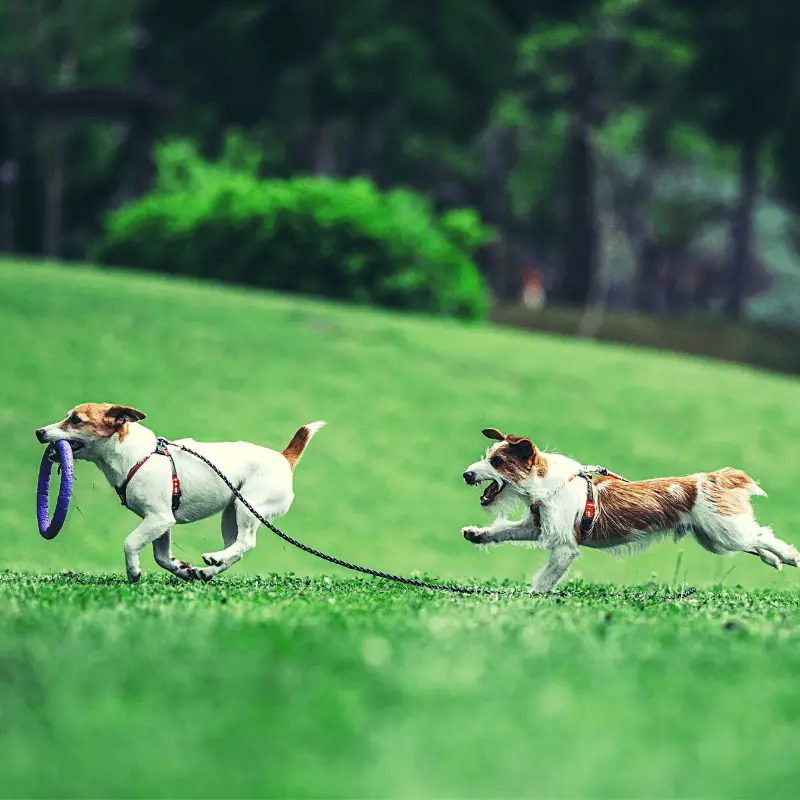
Stranger Friendly
The Jack Russell breed is extremely loyal to their owners, but luckily, along with their loyalty, they are intelligent and friendly dogs. Being this way, a Jack Russell generally won’t lash out at strangers. However, on the flip side, if that stranger is roughly handling his companion or him, a Jack Russell is fearless and confident and would not think twice to lash out at that stranger.
Cat Friendly
Since Jack Russells originate from a hunting background, a Jack Russell will have it built into them to chase cats. It will be fine if you introduce a Jack Russell puppy to a cat or a kitten from an early age. However, if it’s a Jack Russell adult dog that’s not used to cats, you will need to introduce it carefully. See my advice here on how to help a Jack Russell and cat live together.
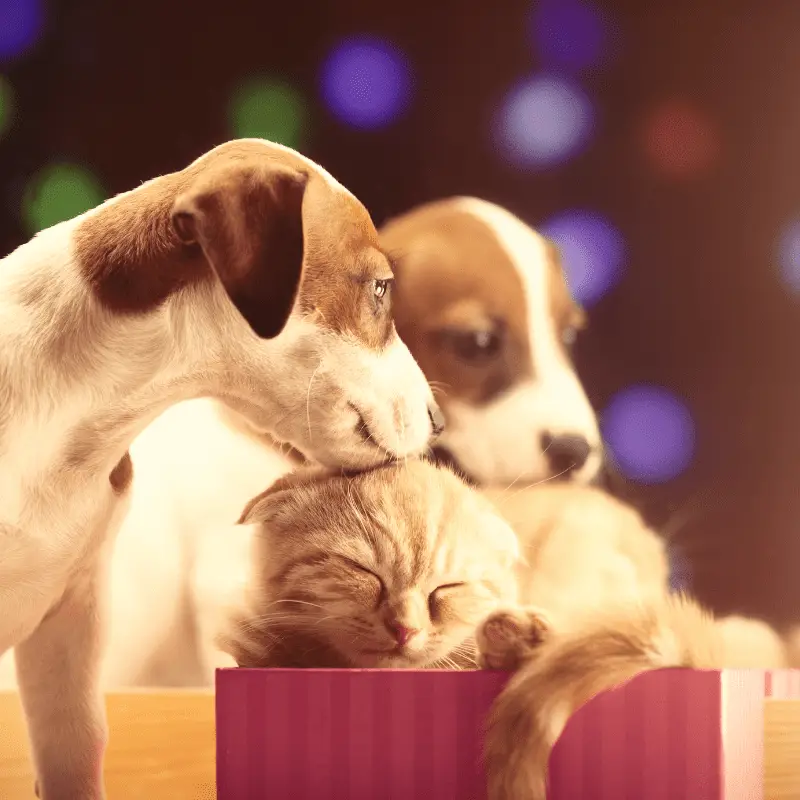
Small Animal/Rodent Friendly
Jack Russell Terriers should be separated from tiny animals and rodents. This breed is from a hunting background, making for a desire to chase. A JRT can harm rodents, including mice, rats, hamsters, guinea pigs, rabbits, chinchillas, gerbils, and birds.
Apartment Friendly
Jack Russells need to burn off energy; they can be on the go constantly once they awake till they sleep again. A Jack Russell living in an apartment wouldn’t be the best living arrangement. However, no doubt they can adapt to apartment life. With any dog, it’s always best to have a garden; they can do their business in an enclosed garden and have a sniff about it.
Aggression
Jack Russells can become aggressive when they feel threatened, but a JRT is generally loving, friendly, and playful. If aggression is a problem, find the root cause for this and correct it through appropriate training. Jack Russell responds well to structure and routine, thus making training easy to complete.
Barking Tendencies
Jack Russell’s love to be heard and seen and their lively, energetic personalities can cause them to bark often. Their favourite time to bark is at other dogs and passers-by through a window. Jack Russell’s bark and shake when they have a build-up of excess energy, so keeping them active and physically stimulated is essential. Jack Russell Terriers can suffer from canine anxiety. One of the signs of stress is frequent barking when left home alone; however, a JRT can easily overcome this with the appropriate training. See here a help guide for leaving your Jack Russell home alone.
Appearance
Jack Russell Terriers are sturdily built, small muscular dogs with a flexible bodies. They have almond-shaped dark eyes, not oversized, with a keen expression visible on the face. Their ears are either button or standard dropped close to their head. Jack Russells have well-developed cheek muscles. The neck is firm, enabling a Jack Russell to carry its head proudly. Their feet are either round or oval but not oversized. The tail is thick at the body’s base and is erect when walking or running around. All in all, a Jack Russell Terrier are well proportioned.
Coat
The coat of a Jack Russell Terrier can either be smooth, broken or rough.
| Hypoallergenic: | No |
|---|
Coat colours
The coat is mainly white and commonly mixed with black or tan. Or all three colours are called a tricolour (white, black and tan)
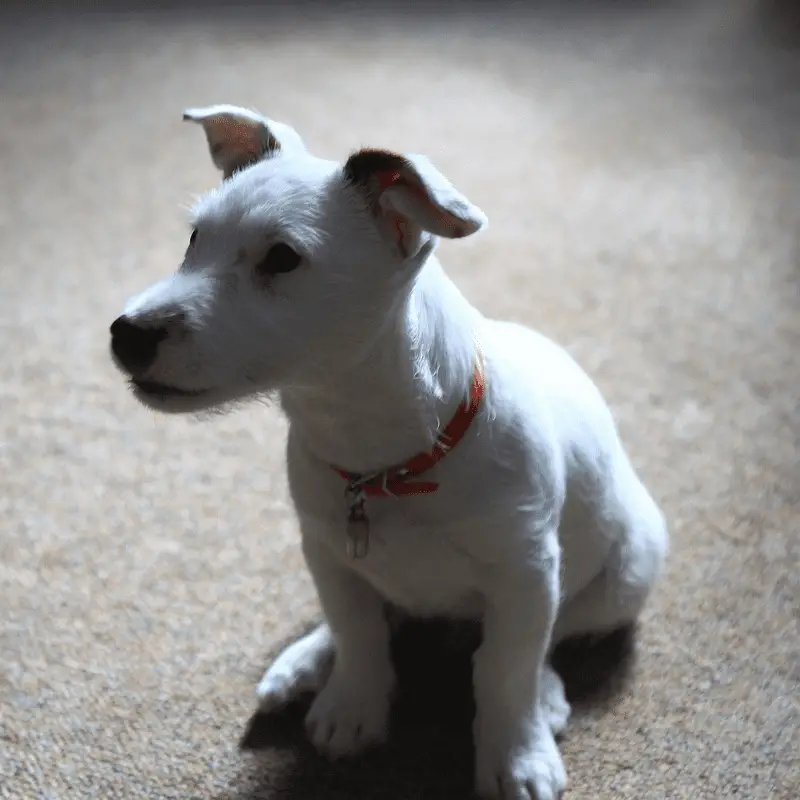
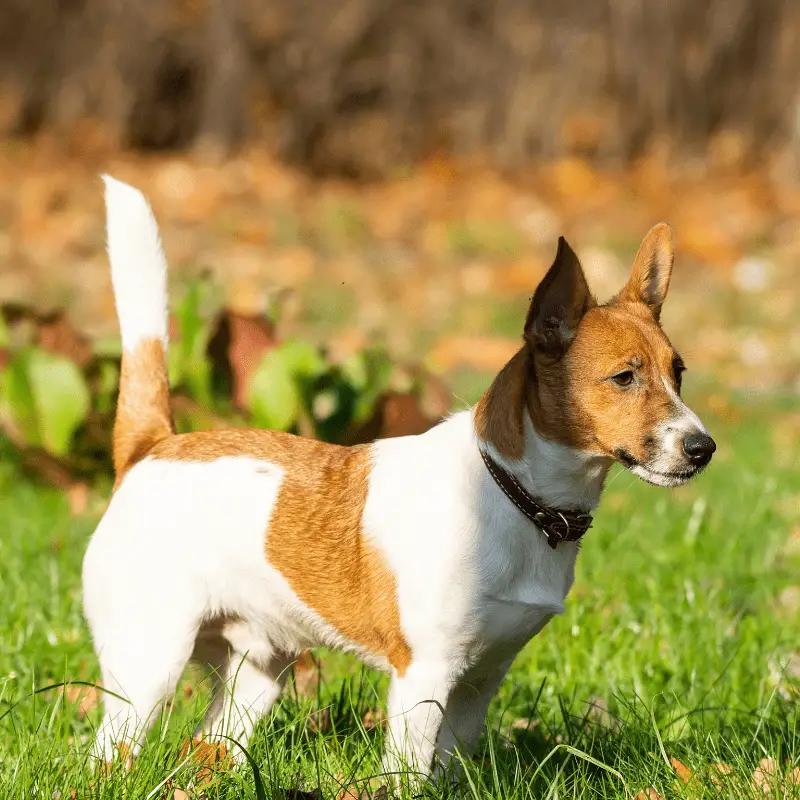
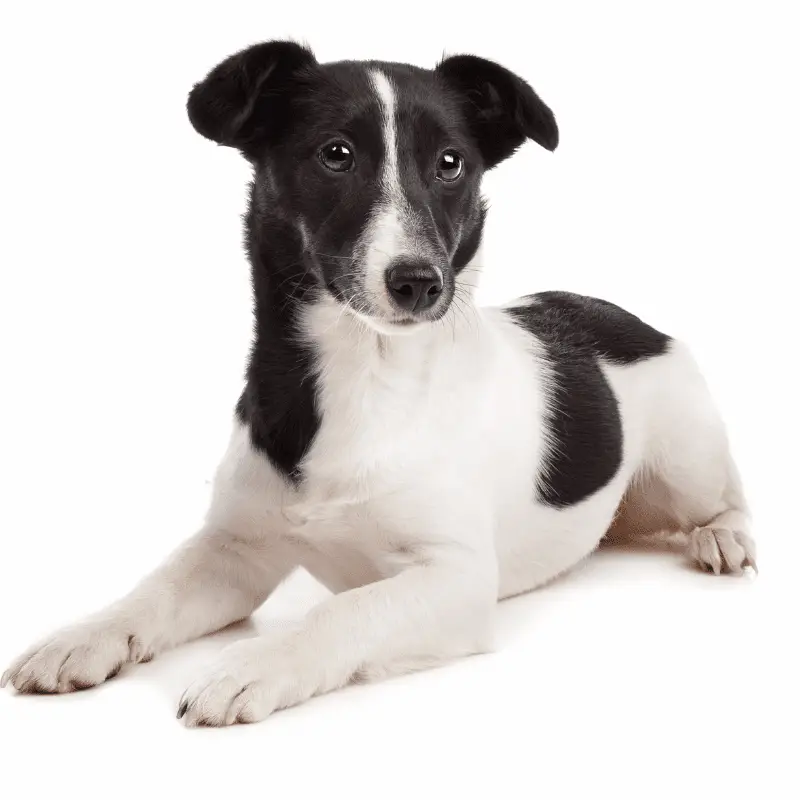
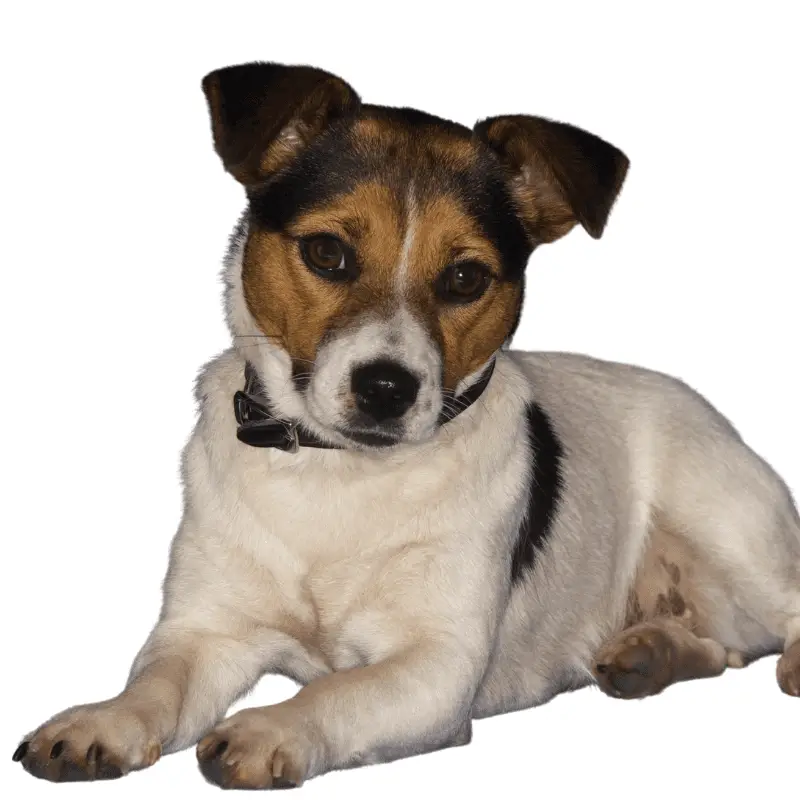
Weight
The weight of a JRT is, on average, weighing in at 13 to 17 pounds.
Height
A Jack Russell stands at 25–38 cm (10–15 inches) at the withers (shoulders).
Age/Life span
Typically a Jack Russell Terrier has a good long life span of up to sixteen years.
Considered elderly range – 13 to 16 years
Grooming Requirements
Jack Russells need little grooming compared to some breeds. However, since they come in three different coats, they need to be groomed slightly differently with each coat. All three types have a double coat that is coarse and dense in texture underneath. All kinds of Jack Russell Terriers coats should never be shaved or cut. However, trim around the eyes for more visibility for broken or rough coats if needed wouldn’t do any harm.
Smooth Coat
The smooth coat needs lesser grooming requirements. A quarterly bath or after a muddy walk should be sufficient. Once a week, use a brush such as a slicker brush or a rubber brush, also known as a curry brush.
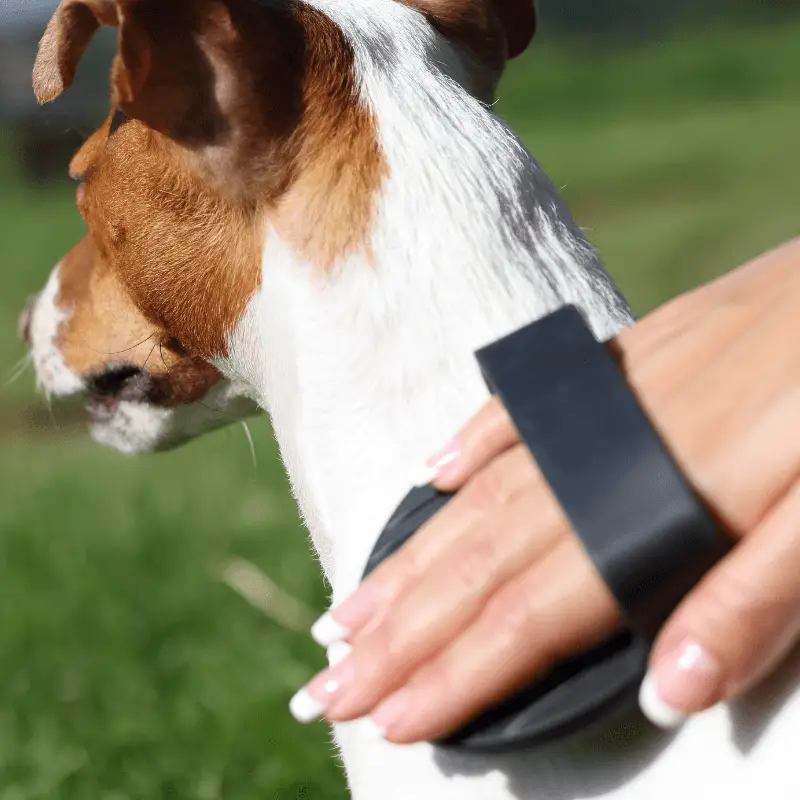
Broken Coat
Broken coated Jack Russells should be bathed every two months and or after a muddy walk. Use a brush such as a slicker or a rubber brush every week. The Jack Russell sheds its fur; however, some shedding doesn’t always occur on the longer coat. A hand-stripping tool removes the dead hair and should be completed every year. The coat is hand-stripped for comfort and appearance and continues developing a healthy coat to repel dirt and water.
Rough Coat
Jack Russell’s coat is hand-stripped for comfort, and appearance and to continue developing a healthy coat to repel dirt and water. Rough coated Jack Russells will require hand stripping twice a year to remove any dead fur that hasn’t been shed off. A Roug coat will need to be gently brushed twice a week. Use a brush such as a slicker brush to complete this. Rough coated JRTs should be bathed every two months or after a muddy walk.
Nail Trimming
Depending on how active a Jack Russell is and what surface they walk on will depend on when they need to cut. Most Jack Russells have thicker nails compared to the same size as other dog breeds. Nails, on average, will need cutting every three-four weeks to keep them at a manageable length.
Teeth Cleaning
Jack Russell Terriers’ teeth play an essential role, not only in eating but also in playing with toys. It’s necessary to frequently brush a Jack Russell Terrier’s teeth and regularly visit the vets for check-ups.
Training
Jack Russell Terrier is ready for training from an early age, and they thrive on their owner’s commands. They have a good nature and a good outlook, and if training practice is delivered correctly, a Jack Russell Terrier will be an obedient, well-behaved dog.
Intelligence
Jack Russell Terrier is an alert dog breed; they are smart and have a high intelligence compared to other dog breeds.
Exercise Requirements
Due to the build-up of excess energy that Jack Russell Terriers are prone to, you must walk your JRT daily for at least forty-five minutes to an hour. Without physical stimulation, a JRT can act out through boredom, which is understandable. You can sometimes tell this in your Jack Russell since they will start to shake randomly; this is due to a build-up of excess energy. Jack Russells thrive on structure and routine.
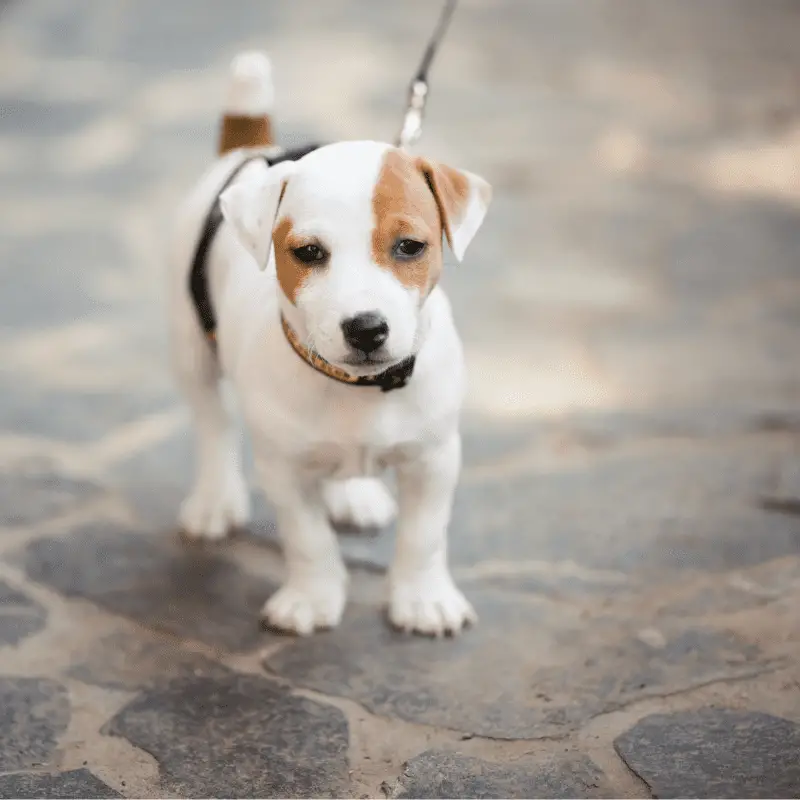
Health
The health of a Jack Russell Terrier is relatively problem-free. The breed was initially bred from quality healthy dogs and chosen by the breeder Reverend John Russell through his knowledge and expertise. Unlike other dog breeds, Reverend John Russell produced these dogs with no extreme features, resulting in poor health. Like all living creatures, they still come with their common health problems.
Common Health Problems
Dislocating lens
The health problem of dislocating lens, known as lens luxation, is when the eye becomes detached from the ligament that holds the lens and eye together. It can be excruciating for a Jack Russell Terrier. However, it can be corrected through surgery and relieved with eye drops.
Gum Disease
Gum disease occurs mainly in the older Jack Russell Terriers, and it’s due to poor dental hygiene throughout their growing life. The build-up of bacteria and minerals along the gum line results in brown scale and tartar, severely damaging the tissues and teeth. When this happens, it’s much more severe and has gone too far even for cleaning. When this happens, it’s called gingivitis. Gingivitis can damage other parts of the body, including the liver and kidneys. Owners can easily avoid this for a Jack Russell Terrier by understanding the importance of regular teeth cleaning. Gingivitis is resolved by removing the infected teeth, deep cleaning, and antibiotics. A Jack Russell Terrier will need to be sedated, and a professional veterinarian will complete the oral surgery.
Pancreatitis
The pancreas is located on a dog between the liver and the small intestine. Pancreatitis is a condition where the pancreas becomes inflamed and which is highly uncomfortable. Its a result of the digestive enzymes attacking the pancreas. This is usually resolved through diet, for instance, if a Jack Russell is fed on table scraps or high in fat food. It will be a case of cutting all this out from their diet. However, in some cases, of more acute pancreatitis, your dog will need intensive treatment such as an IV drip to help restore them to health. This can be avoided by feeding your dog healthy balanced meals and avoiding any high-fat table scraps. This includes foods such as cheese, salmon, pork, and lamb. Find more information on the risks of sharing your food with a dog.
Deafness
Jack Russells dominantly have a white colour coat. However, by having a white coat, they are prone to deafness. Because of the melanogenesis enzyme gene, having less of this gene, you have white fur found on a dog. The more patches a Jack Russell has, the less likely the chances of being deaf at birth or becoming deaf in later life.
Prone to weight gain
Jack Russells love their food, and they aren’t too fussy like some dog breeds. Since they are active and energetic, they aren’t prone to put on weight. However, when they get older and tend not to move as much, it’s a possibility they could gain weight. But all in all, they aren’t prone to putting on weight.
Feeding
It would be best to feed a Jack Russell a well-balanced dog food of a good quality that doesn’t have any extra additives or bulking ingredients. A Jack Russell, if fed high-quality food, can live to a healthy age of 16 years old.
Amount
They don’t eat anymore or any less than the average dog of their size. How much food to give can depend on Jack Russell’s weight, age, and dog food brand. Although generally speaking, an adult-sized JRT provided with good quality food should receive two portions a day of 100 grams a day.
Female Jack Russell Terrier
Pregnancy
A female Jack Russell Terrier is pregnant for around nine weeks but can go as long as eleven weeks. The first showing signs of pregnancy in a Jack Russell is at about three weeks, so after that, there are only six to eight weeks left.
Litter size
In extreme cases, Jack Russell Terriers can have up to twelve puppies in any single litter; however, the average is four to eight in one litter.

Season cycles
A female Jack Russell Terrier has two seasons per year, and they can last two to four weeks each time. For dogs that aren’t used for breeding, it’s recommended to get them spayed. Spaying a dog offers protection against uterine infections and breast tumours. Jack Russell Terriers can be fixed from six months old and onwards.
Recommended read:
- How long are dogs in season? (Care guide)
Male Jack Russell Terrier
A Male Jack Russell Terrier can be neutered at six months or onwards. Fixing a Jack Russell will stop any development of future health problems, like prostate disease or testicular tumours when they grow old.
History
Reverend John Russell first bred the tiny, energetic, working terriers back in the 19th century. The Jack Russell Terriers’ origin can be traced to the now almost lost English White Terrier. Reverend John Russell focused on the dog’s colour, and he wanted to achieve a nearly all-white dog. Reverend John Russell purchased a white and tan terrier female dog from a local milkman and named her Trump. Trump would make the long line of Jack Russell Terriers that we know of today. Coming from a hunter’s background, Reverend John Russell knew the importance of having a white coat and how this enabled them to tell them apart from prey whilst out hunting. Reverend John Russell created the breed for fox hunting and later developed them into dogs to hunt badgers.
| Origin: | England |
|---|
Are you interested to know the timeline since the existence of the Jack Russell Terrier? From the 1800s up until the modern-day, broken down into date format. I have gathered the information, and it’s found here.
Price
Many years ago, back in the late 90’s early 2000’s you could buy a Jack Russell Terrier for around £150 to £250. Now in the year 2021, they have dramatically increased in price. A Jack Russell Terrier costs between £900 and up to £2000, the average price being £1200. As you can see, the increase is enormous. This is mainly down to popularity, and understandably the cost of living has risen.
Monthly on-going cost
The cost of owning a Jack Russell Terrier monthly can vary; however, the Jack Russell Terrier is neither cheap nor expensive. At the start, it can depend on the owner’s choices regarding how much they spend on such items as toys, bowls, beds, and jackets. However, the continued monthly costs are pet insurance high-quality food. A baseline figure is an average of around £50-£70 a month.
Fun facts and extra care
- They are excellent jumpers, and they can jump up to five feet in height, so ensuring you have a fence higher than this would be the right choice.
- Jack Russell Terriers are natural-born diggers, and they love to dig. It’s built into them to search and explore, so ensuring your garden is enclosed, and any gaps under the fence are regularly checked and resolved.
- Less bathing is best for a Jack Russell Terrier. It’s vital not to scrub away their natural oils; bathing them too often can result in extra shedding.
- Jack Russell Terriers often get confused with Parson Russell and Russell Terrier. The main difference is its size. Parson Russell Terriers are the tallest out of the three. At the withers, they are 12-14 inches (30-36cm) and have more of a squarer body look. Russell Terrier is the smallest, standing at 8-12 inches (20-30cm)
- The Jack Russell Terrier has been around for over two hundred years. Still, only on 1st January 2016, The Jack Russell Terrier was finally recognised by the Kennel Club(KC) as a pedigree breed.
- Keep them on the leash until you are in an open area that’s enclosed, like a dog park. Jack Russell Terriers love to chase and can get very easily distracted. Even with the best training provided, it’s not worth the risk.
Messages from Jack Russell owners
Miss Milne (Peterborough)
“I have had four JRTS, and I would class them as one of the best dog breeds around, they love to follow you, and there is never a dull moment when a Jack Russell Terrier is in the room. My eldest lived to sixteen years old, and, unfortunately, he did suffer from pancreatitis and gingivitis. With the right care I received for him, he had his teeth out and put on a special low-fat diet and continued for another few years.”
Over the Moon (Cardiff)
“I would recommend anyone looking for intelligent, low maintenance, loyal, and loving dog to get a Jack Russell Terrier. Mine are my best friends, and they love long walks and cuddles at night. I recommend giving them dry food only and now and then soaking a daily portion in some water for a different texture.”
The proud dog owner (Cambridge)
“Love my boy, and he is one of a kind. A Jack Russell is a friend for life and makes for a great companion, he loves being spoilt and appreciates every new toy that I buy for him and thats a lot, he goes through them like there is no tomorrow.”
